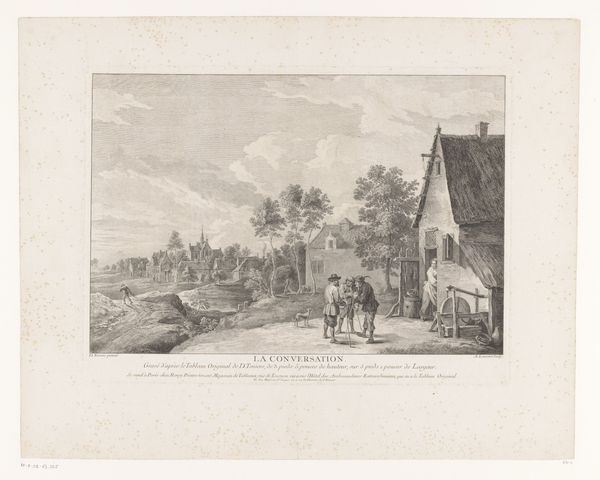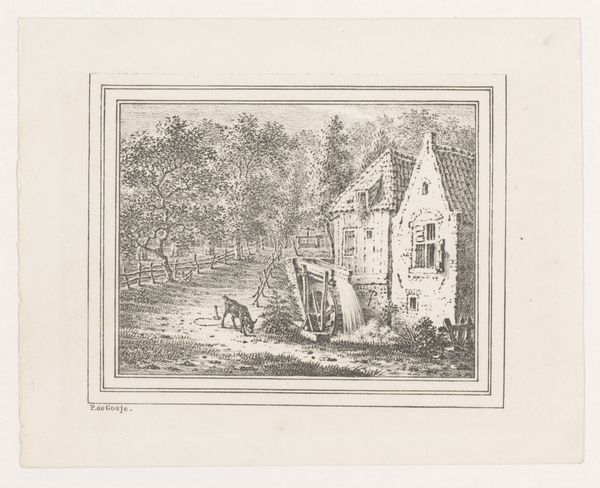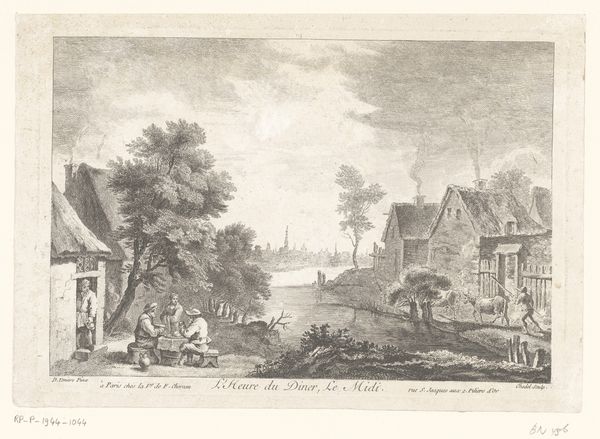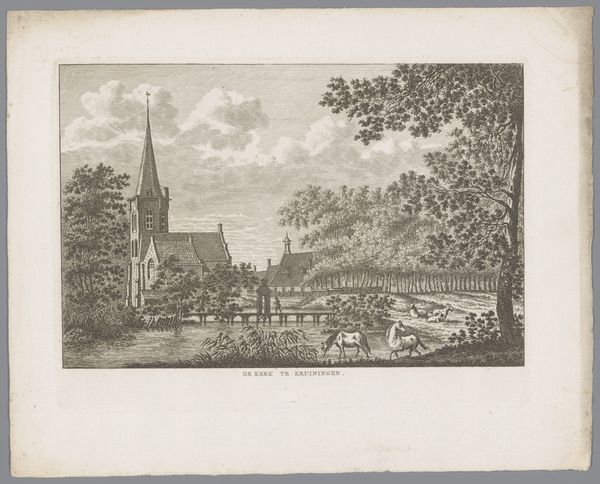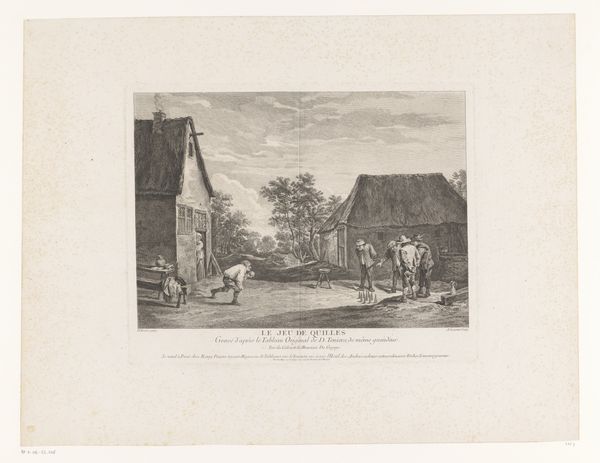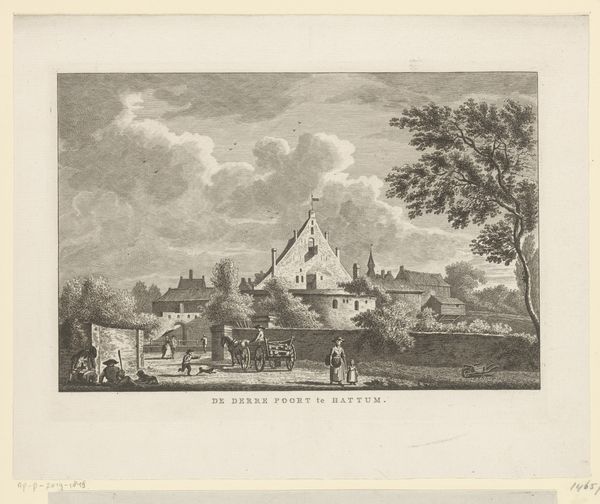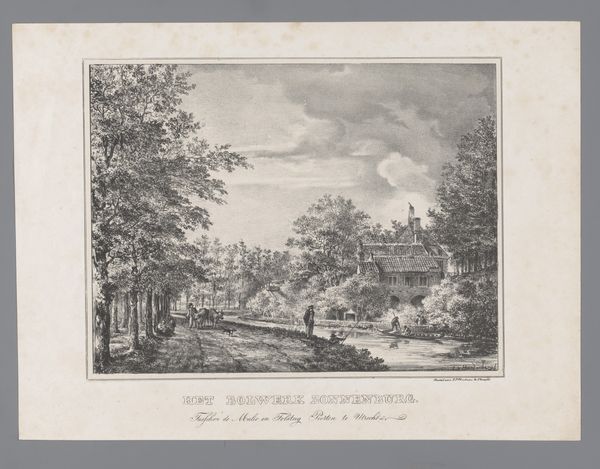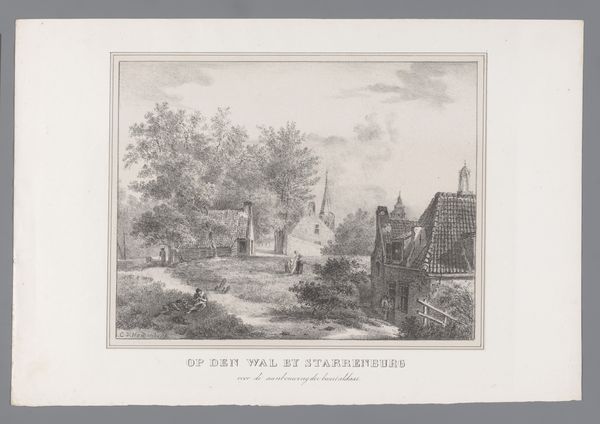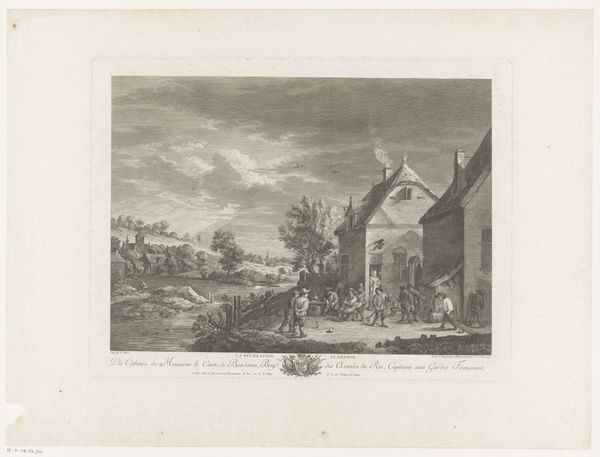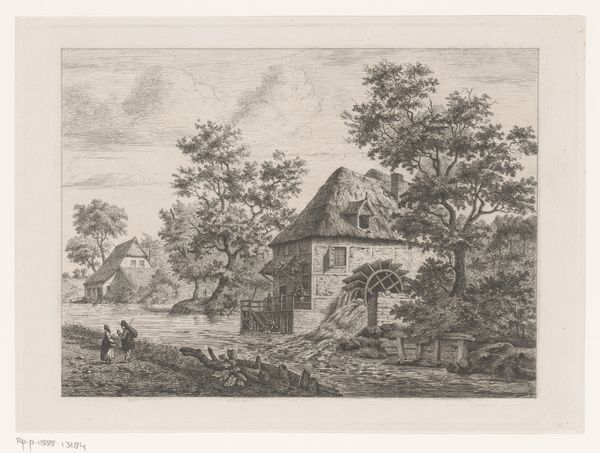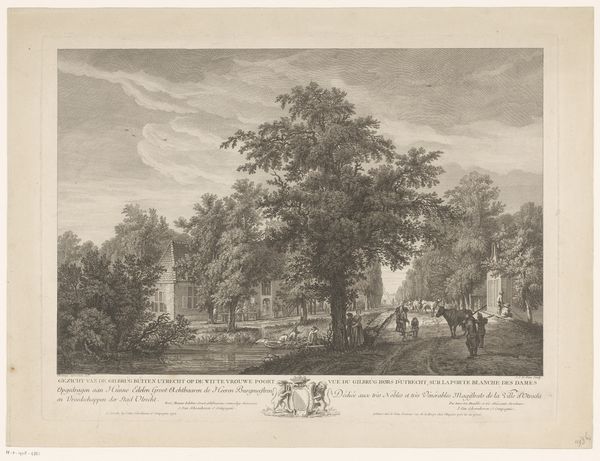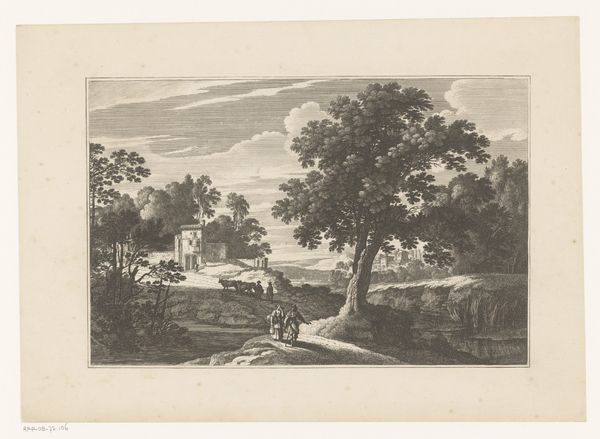
drawing, print, engraving
#
drawing
#
dutch-golden-age
# print
#
landscape
#
genre-painting
#
northern-renaissance
#
engraving
Dimensions: height 176 mm, width 238 mm
Copyright: Rijks Museum: Open Domain
Curator: Here we have "Gezicht op het dorp Overzande" or "View of the village of Overzande," created between 1786 and 1792 by Carel Frederik Bendorp, currently held at the Rijksmuseum. It's an engraving, a print that captures a quaint village scene. Editor: It's quite charming. Instantly, I feel a sense of calm, almost like a memory from a childhood storybook. The light is gentle, even with the detail. It evokes a feeling of nostalgia, doesn’t it? Curator: Indeed. The artwork provides a fascinating window into late 18th-century Dutch village life. Considering Bendorp's identity as an artist, we can explore how genre paintings such as this offer not only aesthetic pleasure but also insights into societal values and power structures within the rural Dutch landscape. Editor: I see the village almost as a character itself—weathered houses under the church spire, people shepherding animals, all blending in together. Makes you think about community, a shared existence. Was life really like that back then, I wonder, or is that how the artist wanted to remember it? Curator: It's crucial to understand such images were often carefully constructed to represent particular ideologies. The idealization of rural life frequently glossed over the hardships faced by agrarian communities and maintained particular hierarchies. What do you think that romanticization serves? Editor: Well, maybe the point is to make people feel good. To look at simplicity and yearn for a life before technology. As for those hierarchies you mention, in every life a little rain must fall—I find comfort here! Curator: By engaging with feminist theory, for example, we can also ask about the roles of women in these depictions of rural life, examining whether they are accurately represented or if their experiences are marginalized in favor of a male-centric perspective. Editor: All that seriousness makes the world a dull place! Looking closely, though, what pops is the feeling of light filtering through the leaves—I would like to reach in there and paint. What will you study further? Curator: I think next I will be looking at this print's historical impact. Understanding how such works influenced contemporary perceptions of the Dutch countryside allows us to analyze its continuing relevance in shaping national identity and collective memory. Editor: I think I’ll head back to the gift shop and find a postcard for my mum! Thanks for pointing out things I’d likely miss on my own!
Comments
No comments
Be the first to comment and join the conversation on the ultimate creative platform.
